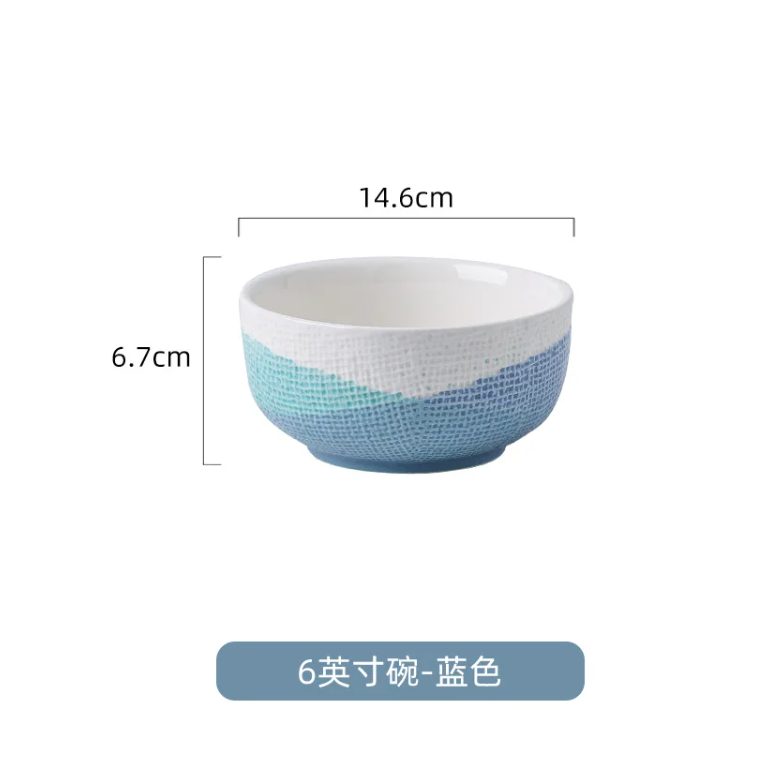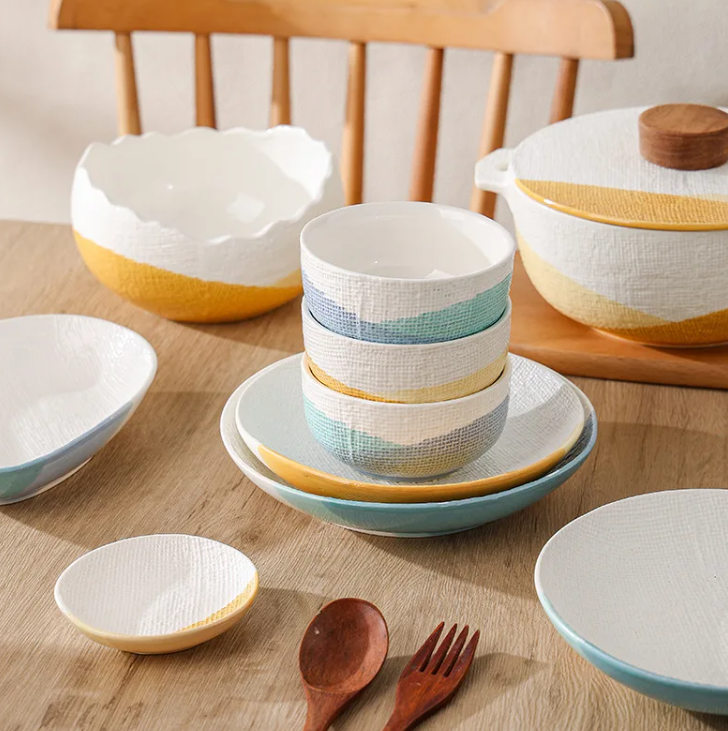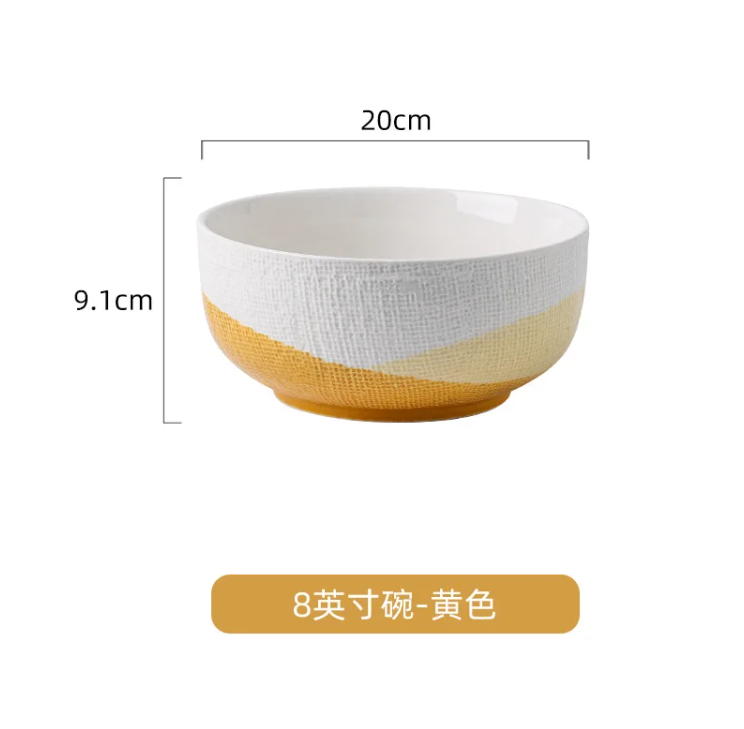In any kitchen, the right dinnerware is not just a matter of style, but also functionality. Among the many types of kitchenware you’ll collect over the years, ceramic bowls are truly the unsung heroes. Whether you’re preparing a meal for yourself, your family, or guests, ceramic bowls are versatile, durable, and can elevate the dining experience.
If you’re looking to upgrade your kitchen, there are a few types of ceramic bowls that should be at the top of your list. Here’s a breakdown of the four essential ceramic bowls every kitchen needs, how they differ, and how to choose the right one for your cooking style.
1. The Classic Soup Bowl
Why It’s Essential:
A good soup bowl is an absolute must for any kitchen. Whether you’re serving a hearty chicken noodle or a delicate bisque, this bowl will be your go-to.
Key Features:
- Size: Typically between 6 to 8 inches in diameter, these bowls offer enough space for soups and stews.
- Depth: A classic soup bowl has enough depth to prevent spills while you enjoy your meal.
- Shape: Generally round, with gently sloping sides.
Material Advantages:
Ceramic is the preferred material for soup bowls because it retains heat well, ensuring your soup stays warm longer. Unlike plastic or glass, ceramic also gives a more refined, earthy feel to your dining experience.
Popular Brands to Consider:
If you’re looking for quality ceramic soup bowls, these global brands stand out for their design and functionality:
- Le Creuset (France) – Known for their vibrant, heat-retaining ceramic bowls.
- Corelle (USA) – A well-loved brand for durable, chip-resistant bowls.
- Villeroy & Boch (Germany) – Offers a luxurious, timeless design that fits both casual and formal settings.
- Royal Worcester (UK) – A classic English brand recognized for fine craftsmanship in ceramics.
- Bodum (Denmark) – Although better known for their coffee gear, Bodum’s soup bowls offer sleek, modern designs.
2. The Salad Bowl
Why It’s Essential:
Every kitchen needs a bowl for serving fresh salads. Salad bowls come in all shapes and sizes, but ceramic ones are particularly popular for their weight, smooth surface, and aesthetic appeal.
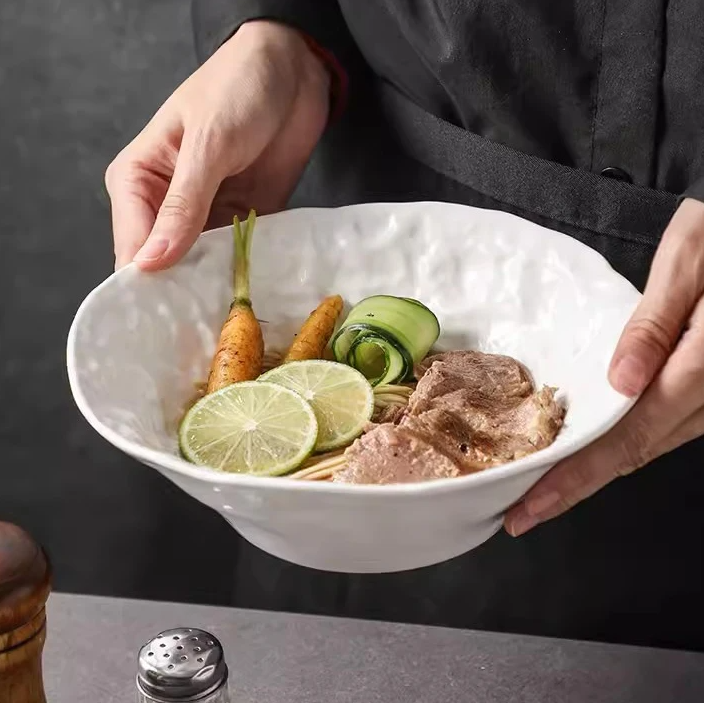
Key Features:
- Size: Salad bowls range from 9 to 12 inches in diameter, perfect for tossing greens, fruits, or grains.
- Shape: While some prefer round, others opt for a more oval or even square shape for a modern twist.
- Functionality: The ceramic material is non-reactive, meaning your fresh salad ingredients won’t pick up strange tastes from the bowl.
Material Advantages:
Ceramic salad bowls are perfect for preventing heat from affecting your ingredients. You won’t have to worry about your greens wilting due to an overheated bowl, as ceramic naturally keeps the temperature consistent.
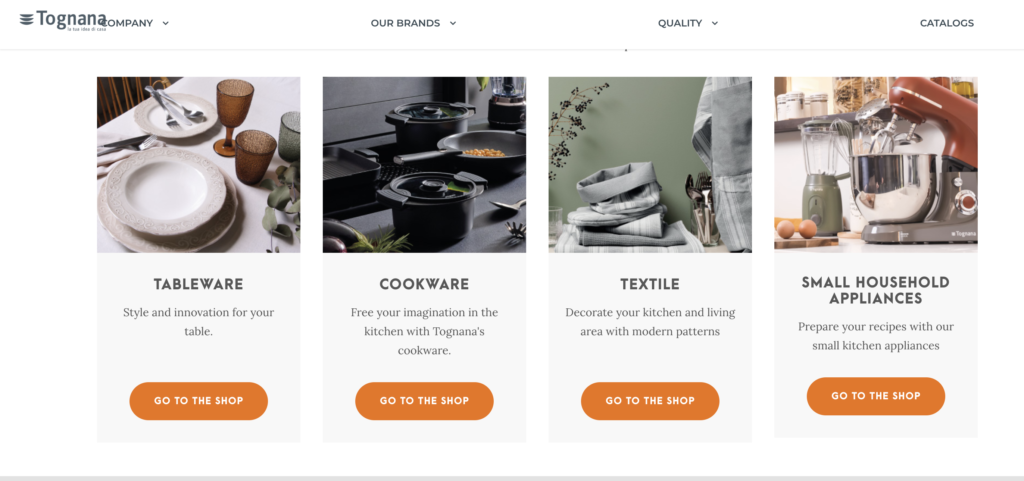
Popular Brands to Consider:
If you want your salad bowl to reflect both quality and design, check out these renowned ceramic brands:
- Crate & Barrel (USA) – Offers stylish ceramic salad bowls with a contemporary edge.
- IKEA (Sweden) – Affordable yet functional ceramic salad bowls, often with minimalist designs.
- Jars Ceramistes (France) – Delivers handmade ceramic pieces with an artistic touch.
- Tognana (Italy) – Known for their Italian craftsmanship and high-quality ceramics.
- Rörstrand (Sweden) – Features sophisticated, timeless ceramic designs for modern kitchens.
3. The Pasta Bowl
Why It’s Essential:
For pasta lovers, a dedicated pasta bowl is a must-have. It’s not just for pasta either—this type of bowl can also be used for risotto, noodles, and even stews.
Key Features:
- Size: Pasta bowls are usually larger, around 10 to 12 inches in diameter, providing plenty of room for your noodles to sit comfortably.
- Shape: Often slightly shallow with a wide rim, allowing for easy twirling of pasta and accommodating sauces.
- Depth: Pasta bowls are typically deeper than regular bowls, making them ideal for holding larger portions of food.
Material Advantages:
The thick, insulated nature of ceramic keeps your pasta warm, even as you enjoy it over time. Ceramic bowls also have a smooth, glazed surface that makes them easy to clean after a saucy meal.
Popular Brands to Consider:
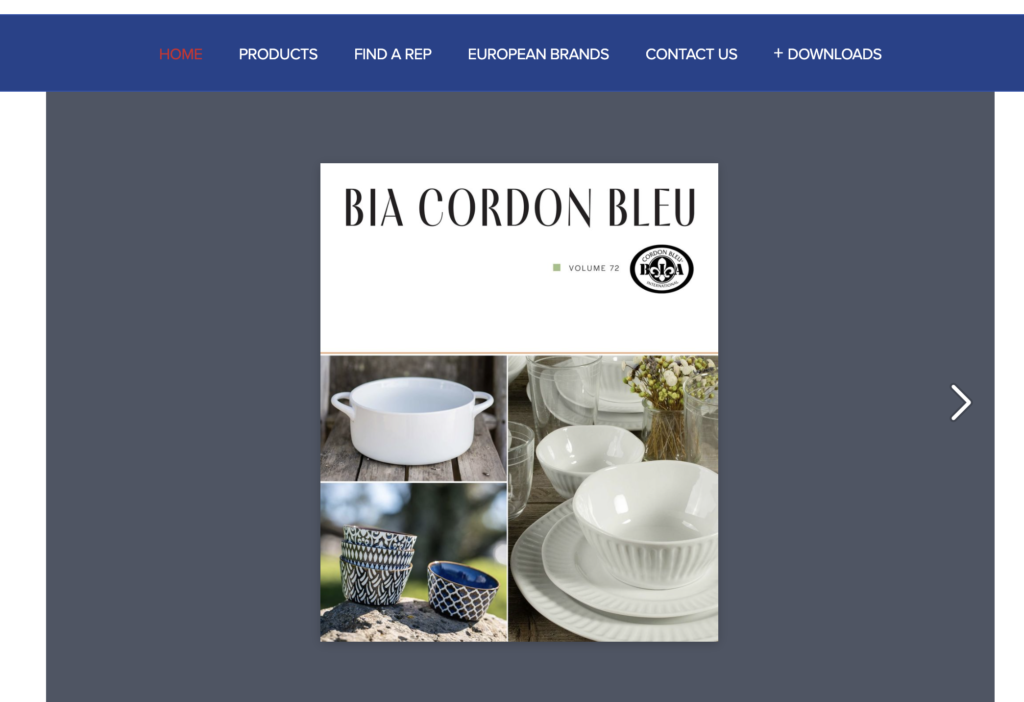
For those serious about their pasta bowls, these brands are known for creating high-quality ceramic dishes:
- Sophie Conran for Portmeirion (UK) – A range of stylish and durable ceramic pasta bowls.
- Le Creuset (France) – Known for vibrant colors and superb heat retention.
- Fitz and Floyd (USA) – Offers fine ceramic bowls with intricate designs, ideal for pasta lovers.
- BIA Cordon Bleu (USA) – Specializes in classic, elegant bowls perfect for pasta.
- Villeroy & Boch (Germany) – They create luxurious, versatile ceramic bowls, perfect for pasta and much more.
4. The Mixing Bowl
Why It’s Essential:
Whether you’re baking, mixing ingredients for a salad, or prepping for a big dinner, a set of ceramic mixing bowls is invaluable.
Key Features:
- Size Range: Typically, a mixing bowl set includes multiple sizes ranging from 2 to 8 quarts.
- Shape: Mixing bowls often feature a higher, narrower shape compared to traditional bowls, allowing for easy stirring without spills.
- Functionality: Ceramic mixing bowls have a heavier weight than plastic, which helps them stay steady on the counter while you’re working.
Material Advantages:
Ceramic is great for mixing because it’s non-porous, meaning ingredients won’t stick to the surface or absorb odors. Plus, its durability ensures the bowls won’t warp, even after years of use.
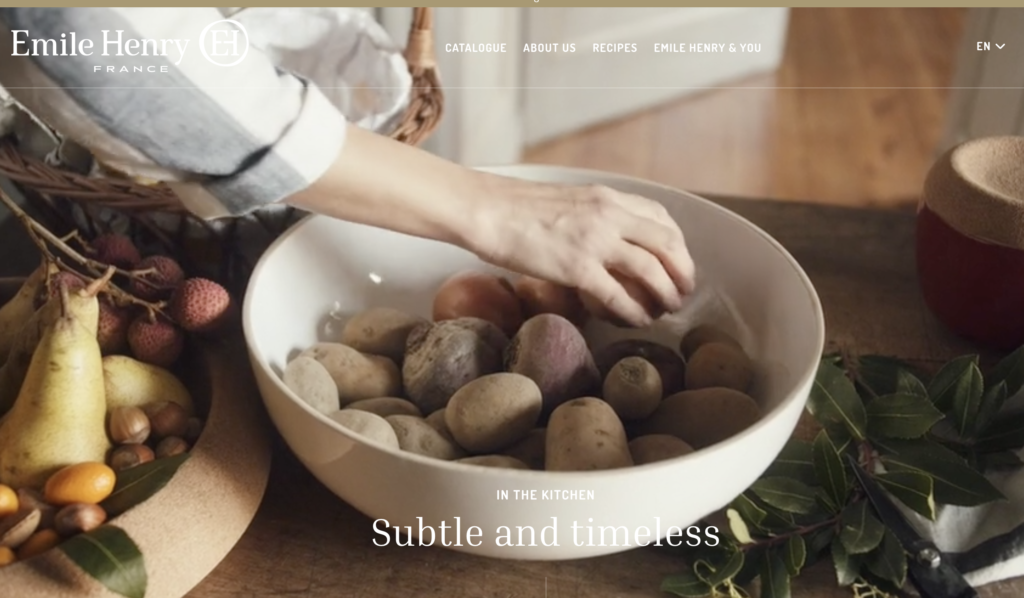
Popular Brands to Consider:
For those looking to invest in reliable and attractive ceramic mixing bowls:
- Emile Henry (France) – Known for their heavy-duty ceramic mixing bowls with heat resistance.
- Pyrex (USA) – Offers sturdy, oven-safe ceramic mixing bowls that are a staple in many kitchens.
- Crock-Pot (USA) – While best known for their slow cookers, they also offer excellent ceramic mixing bowls.
- Cusinart (USA) – Their high-quality ceramics are perfect for mixing and serving.
- Duralex (France) – Famous for their tempered glass and ceramic ware, ideal for baking and mixing.
Comparison of Ceramic Bowls
| Type of Bowl | Size | Shape | Main Use | Material Benefits |
|---|---|---|---|---|
| Soup Bowl | 6-8 inches in diameter | Round, sloping sides | Soup, stews, broths | Retains heat, earthy feel |
| Salad Bowl | 9-12 inches in diameter | Round, oval, square | Salad, fruits, grains | Non-reactive, keeps ingredients fresh |
| Pasta Bowl | 10-12 inches in diameter | Shallow, wide rim | Pasta, risotto, noodles | Keeps food warm, easy to clean |
| Mixing Bowl | 2-8 quarts in volume | Higher, narrower sides | Mixing, baking, prepping | Non-porous, durable, stable on counters |
Conclusion
Ceramic bowls are an essential part of any well-equipped kitchen. From enjoying your favorite soup in a well-crafted bowl to mixing up a batch of cookies, these versatile and stylish dishes will never go out of style. The material offers heat retention, durability, and a timeless aesthetic that is perfect for any meal, whether casual or formal.
As a global supplier of ceramic tableware, EKA specializes in high-quality OEM and ODM ceramic products. If you’re looking to expand your ceramic collection or find a trusted manufacturer to meet your specific needs, we’re here to help.
FAQs
Q1: Are ceramic bowls dishwasher safe?
A: Yes, most ceramic bowls are dishwasher safe. However, it’s always best to check the manufacturer’s guidelines for specific care instructions.
Q2: Can I use ceramic bowls in the microwave?
A: Yes, ceramic bowls can generally be used in the microwave, but avoid using them for extreme temperature changes as they may crack.
Q3: How do I prevent ceramic bowls from chipping?
A: To avoid chipping, use ceramic bowls gently and store them in a safe place. Avoid dropping them or placing heavy items on top.
Q4: Are ceramic bowls eco-friendly?
A: Yes, ceramic is a sustainable material. Unlike plastic, ceramic is durable and can last for years, reducing the need for frequent replacements.
Q5: Can I use ceramic bowls for baking?
A: Absolutely! Ceramic bowls are great for baking, especially when you need to mix ingredients or cook dishes like cakes and casseroles.

